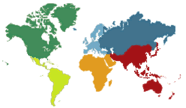When a spiritual calling took Rabbi Elchonon and Chana Tenenbaum and their family to California’s Napa Valley four years ago, they knew that they would face a new beginning, and a lot of hard work.
“All beginnings are challenging,” said Elchonon Tenenbaum, who as director of the Napa Valley Chabad-Lubavitch Jewish Center runs services and Torah classes for local residents. “That is the sign of a good beginning.”
What the 32-year-old rabbi didn’t know was that the region’s famed vineyard would draw himself closer to the Torah.
As Chabad-Lubavitch emissary, the Tenenbaums had to connect with a very small agricultural community that stood in stark contrast to the Brooklyn, N.Y., neighborhood where he grew up. With a wine industry dating back to the 19th century, the valley is home to hundreds of vineyards; but Tenenbaum knew nothing about farming, let alone viticulture.
“I never saw agriculture,” Tenenbaum said of his Crown Heights upbringing. “There were a few plants in the house. You didn’t see the hand of G‑d [in nature].”
In light of Napa’s wine making fame, Tenenbaum took a budding interest in fine wines and engaged local vintners. He enjoyed dry kosher wines, and developed an earnest curiosity in better quality kosher vintages.
So in 2007, with a lot of heart, even more faith, and a considerable amount of guidance from the experts, Tenenbaum bottled his first wine, a case of cabernet. He called it “Shlomo Hamelech” – the Hebrew name translates to “King Solomon” – and invited his friend Jeff Morgan, a wine maker and co-owner of Covenant Winery in Napa Valley, to try it.
Morgan, one of the few kosher wine makers in Napa, sampled the new product with a great deal of skepticism. After all, Tenenbaum had no winemaking experience.
“It was absolutely delicious,” marveled Morgan. “Rabbi Tenenbaum had never seen a grape vine before moving to Napa Valley. He learned that all kosher wine can taste really, really good.”
The rabbi had caught the wine bug. The following year, Tenenbaum found a vineyard in need of tending and took to the fields.
He called his time among the vines a “religious experience.”
The work was arduous. The vines had to be trained, and there was a lot of chemistry involved in the winemaking process.
“I could not figure out why I was out there pruning vines,” said Tenenbaum.

Connecting to the Source
But the more he tended to his grapes, the more the rabbi felt like he was part of something bigger.
“When you go to the store, you don’t know where it comes from. You are detached from it,” he explained. “When you are a part of it, it goes back to G‑d.”
The experience “of making something out of nothing” brought Tenenbaum inexorably closer to the Torah.
“So many holidays are based on agriculture. Holidays became much more real,” he said. “Before Sukkot, people were actually picking grapes. The Torah came to life through the wine making process. It’s like a time warp. It makes the Torah more real. You know what it was like for someone to toil in the fields.”
Tenebaum saw reflections of Judaism throughout the vinification process. He compared the grape harvest to the birth of a baby, and the bottling process to a Bar Mitzvah.
By 2008, Tenenbaum had produced a barrel of field blend he called Cuvee Chabad – Pardes. In 2009, he released another barrel.
The results of this year remain a dream, but he hopes to soon harvest his grapes and produce a couple of barrels.
Reviews have been positive.
Napa resident Henry Michalski served some of the wine at a party attended by some very serious wine makers.
“People raved about it,” said Michalski. “It’s superior wine.”
But while Tenenbaum does not see winemaking as a commercial endeavor, he does use it as a way to connect with people and fuel his broader mission of strengthening Judaism in this corner of California.
The Tenenbaums’ Chabad House provides Shabbat services, women’s programs, adult education classes and a Hebrew school.
“Jews are his business,” reminded Morgan. “Rabbi Tenenbaum is fulfilling his mission very, very well.”





Join the Discussion